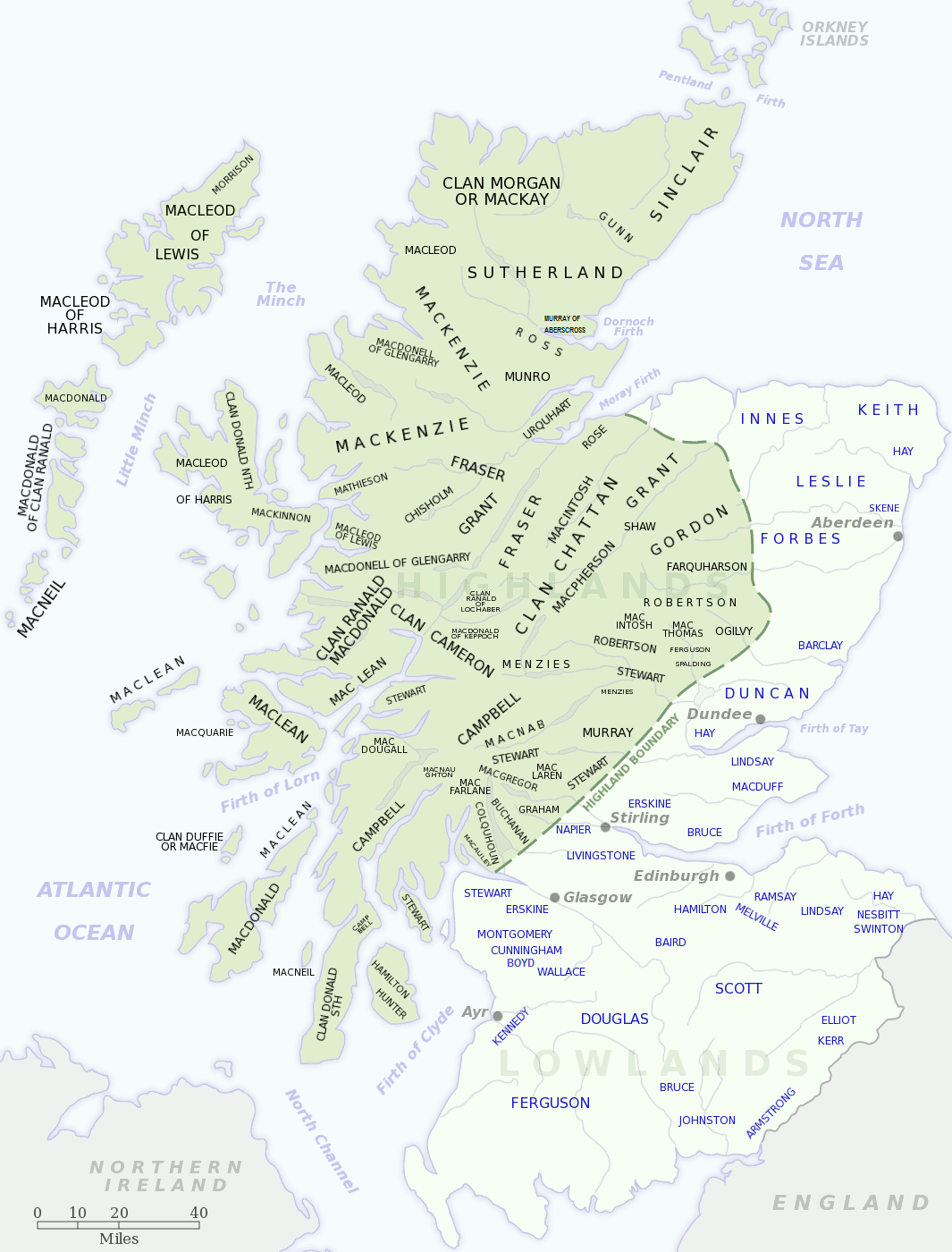Map by GSL / Wikimedia Commons
Ever wondered why certain Scottish surnames cluster in specific regions? This fascinating map of Scottish Highland clans and Lowland families reveals centuries of territorial heritage that shaped Scotland’s cultural identity.
From the misty Highlands to the rolling Lowlands, each colored region tells a story of fierce loyalty, ancient traditions, and family bonds that endure to this day.
The Great Divide: Highlands vs Lowlands
The map clearly illustrates Scotland’s historic division between the mountainous Highlands and the gentler Lowlands.
The Highland clans, predominantly shown in the northern and western regions, operated under a traditional clan system where kinship and loyalty to the chief defined social structure. These clans controlled vast territories through a combination of blood ties, marriage alliances, and sometimes brutal warfare.
In contrast, the Lowland families in the south and east developed more along feudal lines, with land ownership and agricultural wealth playing crucial roles. Notice how names like Bruce, Douglas, and Stewart dominate the southern regions, representing powerful noble houses that influenced Scottish and British politics for centuries.
Legendary Names and Their Territories
Some of Scotland’s most famous clans occupy prime real estate on this map.
Clan MacLeod claims significant territory in the western Highlands and islands, their maritime prowess evident in their island strongholds. The Campbells, one of Scotland’s most powerful clans, stretch across Argyll with their seat at Inveraray Castle.
Further north, the Mackenzies and Clan Ross controlled vast Highland territories, while the Gordons dominated the northeastern regions around Aberdeen.
Each clan’s territory often reflected their primary sources of power: coastal access for maritime trade, mountain passes for controlling movement, or fertile valleys for agriculture.
Island Strongholds and Coastal Kingdoms
The western islands and coastal regions reveal a fascinating pattern of clan distribution.
The MacDonalds, once Lords of the Isles, scattered across multiple island territories, reflecting their historical naval dominance. Meanwhile, clans like the MacLeans and MacLeods established island kingdoms that operated almost independently from mainland Scottish authority.
These island clans developed unique cultures, blending Scottish, Norse, and Gaelic influences. Their isolation created distinct dialects, customs, and fighting techniques that made them formidable opponents and valuable allies.
Modern Connections to Ancient Lands
Today’s Scots often trace their heritage back to these territorial origins. Genealogical research frequently leads families back to specific regions on this map, connecting modern descendants with ancestral lands their forebears once called home.
Many Scottish festivals and Highland Games still celebrate these clan affiliations, with participants wearing tartans and displaying clan badges that link them to these historic territories.
Understanding this map helps explain why certain Scottish traditions persist in specific regions and why family names remain concentrated in particular areas centuries after the clan system’s peak. It’s a testament to the enduring power of family, land, and cultural identity in shaping a nation’s character.
Whether you’re planning a trip to Scotland or researching your own heritage, this clan map serves as your guide to understanding the complex tapestry of Scottish identity woven across the Highlands and Lowlands.
Help us out by sharing this map:
